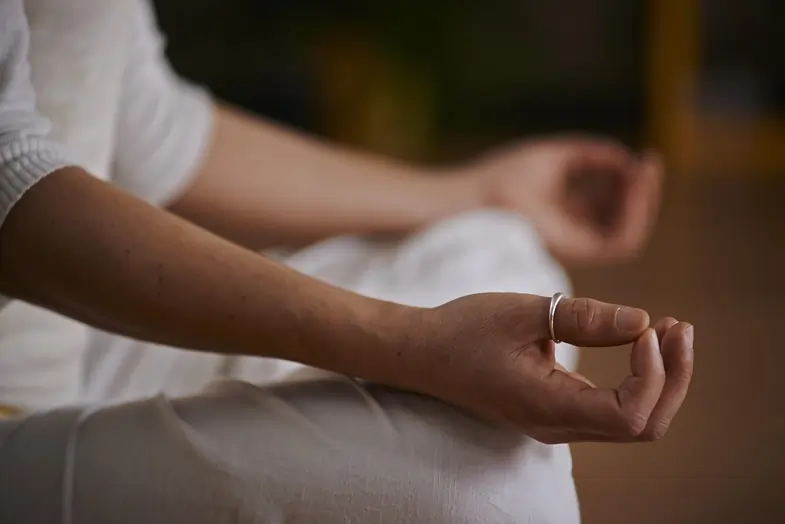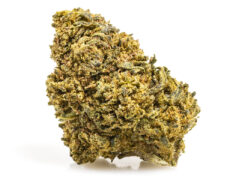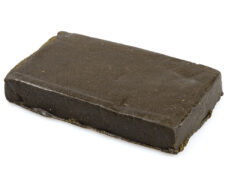Published on: 21/05/2025
A dialogue between ancient wisdom and new frontiers of wellness
In today’s fast-paced world, the search for balance and inner well-being has become a priority for many. Two paths, one ancient and one surprisingly modern, are converging, capturing the attention of those who wish to cultivate a deeper relationship with their body and mind: yoga and CBD.
Yoga, an ancient discipline rooted in Eastern philosophy, offers powerful tools for uniting body, breath and spirit, promoting flexibility, strength and greater self-awareness.
On the other hand, CBD (cannabidiol), a natural compound derived from the hemp plant, is emerging as an interesting ally for well-being, appreciated for its potential relaxing and rebalancing properties, without the psychoactive effects associated with other varieties of cannabis.
This article aims to explore the fascinating synergy between these two practices, investigating how integrating CBD into the yoga context can enrich the experience and support a journey towards a more complete harmony. We will examine the scientific and anecdotal basis of this link, while clarifying fundamental aspects about the nature of CBD and its origin from hemp, a plant that is profoundly different from THC-rich cannabis.
A journey to discover how ancient wisdom and modern botanical understanding can work together for our overall well-being.


What is CBD and where does it come from: let’s clarify hemp
Before delving into the synergy between yoga and CBD, it is essential to clarify exactly what cannabidiol is and where it comes from.
Cannabidiol is one of over one hundred cannabinoids identified in the Cannabis Sativa L. plant. Unlike its better-known cousin, THC (tetrahydrocannabinol), CBD is not psychoactive, meaning that it does not cause the ‘high’ feeling typically associated with marijuana.
The primary source of CBD used in many products available on the market is industrial hemp, or ‘hemp light’. These are varieties of Cannabis Sativa L. specifically cultivated to have extremely low levels of THC (generally less than 0.2% or 0.3%, depending on local regulations), fully respecting European legal limits.
This distinction is crucial: while high-THC cannabis is subject to strict regulations and is illegal in many contexts, the hemp from which CBD is extracted is cultivated legally and used for a wide range of purposes, from the textile and food industries to the production of cannabidiol-rich extracts, such as the well-known CBD oil. Beyond extracts, the botanical source itself is often appreciated, with high-quality CBD buds showcasing the plant’s natural aromatic diversity within legal frameworks.
Understanding this difference is the first step to approaching the world of cannabidiol with information and awareness, dispelling myths and prejudices often linked to an incomplete knowledge of the cannabis plant in its various forms.
Read also: Cannabis and religion: tracing the roots of marijuana across sacred traditions
Yoga: a millenary journey towards inner balance
Yoga is much more than just a form of exercise; it is a very ancient holistic discipline, born in India thousands of years ago, whose ultimate aim is the union (yoga, in Sanskrit, actually means ‘union’) of mind, body and spirit. It’s not just a question of performing positions or improving your physical shape, but of undertaking a real inner journey that favours balance, harmony and awareness.
Through the constant practice of asanas (physical positions), pranayama (breathing techniques) and dhyana (meditation), yoga becomes a powerful tool for finding oneself, for cultivating a lucid presence and for developing an authentic connection with who we really are. Every movement, every breath, every moment on the mat is an opportunity to observe, understand and transform.
On a physical level, yoga helps improve flexibility, muscle strength, posture and balance. It also helps prevent chronic pain, stimulates circulation and makes the body more responsive yet more relaxed. But its benefits are not limited to the body: regular practice promotes deep mental calm, reduces stress and anxiety levels, improves sleep quality and enhances the ability to concentrate.
Yoga teaches us to listen to our body, to respect our own rhythms and to recognise inner signals without judgement. It is a gentle invitation to slow down, to breathe consciously and to return to ourselves, in a space of presence, acceptance and serenity. In a fast-paced world, yoga reminds us of the value of silence, of being rooted and of authenticity.
Potential synergy: how yoga and CBD could interact
The growing interest in combining yoga and CBD (cannabidiol) stems from the overlap of their potential benefits on mind-body well-being. Although specific scientific research on this combination is still in its infancy, the known properties of cannabidiol suggest several areas of possible synergy.
CBD interacts mainly with our endocannabinoid system (ECS), a complex network of receptors and molecules present throughout the body, which plays a crucial role in regulating functions such as mood, sleep, appetite and pain perception.
It is hypothesised that by modulating the ECS, CBD can help promote a state of internal balance, known as homeostasis. This state of calm and centring could prove particularly beneficial before, during or after yoga practice.
For example, it could facilitate the release of muscle tension, making asanas more accessible, or help quiet the mind, allowing for deeper meditation and a greater connection with the breath.
The idea is not to alter the yoga experience, but rather to create potentially more favourable internal conditions to fully immerse oneself in the practice and fully grasp its intrinsic benefits.
Let’s see specifically how this interaction manifests itself on the body and mind.
Deepening the practice: CBD and the search for awareness
One of the central objectives of yoga is the cultivation of mindfulness, or the ability to be fully present and aware in the here and now, without judgement. Achieving this state of mind, however, can be a challenge in a world full of distractions and with often hyperactive minds.
This is where the potential role of CBD comes into play. Thanks to its relaxing and anxiolytic properties suggested by preliminary studies and anecdotal evidence, cannabidiol could help reduce mental ‘background noise’, that continuous stream of thoughts that often hinders concentration during yoga and meditation.
Imagine being able to enter more easily into a state of focused calm, where attention can remain anchored to the breath, to bodily sensations in asanas or to inner silence during meditation. This doesn’t mean ‘turning off’ the mind, but rather creating a more serene and receptive mental space.
By facilitating a greater mental presence, CBD could indirectly support the deepening of the yoga practice, allowing the practitioner to explore the subtler levels of their experience with greater ease and to cultivate a keener awareness of their inner state, moment by moment.


Physical well-being: potential support for the body and movement
In addition to the mental and spiritual aspects, yoga is intrinsically linked to the physical body. The asanas work on strength, flexibility, balance and body awareness.
In this area too, CBD has interesting characteristics that could complement the practice.
Scientific research has explored the potential anti-inflammatory and analgesic properties of CBD, suggesting a possible role in supporting physical well-being. For yoga practitioners, this could translate into help in managing post-practice muscle soreness or in soothing the stiffness that can sometimes limit the execution of certain positions.
A more comfortable and less contracted body is naturally more open to fluid movement and the exploration of asanas.
Be careful, it’s not about ‘masking’ pain or recklessly pushing your limits – listening to your body remains fundamental in yoga – but rather about creating potentially more favourable conditions for a more harmonious and pleasant practice.
This potential support for physical well-being could help make yoga more accessible and sustainable over time, encouraging constancy in practice which is essential to fully enjoy its long-term benefits.
CBD and hemp: permitted uses and important considerations
When approaching the world of CBD, it is essential not only to understand its potential, but also to be well informed about the regulatory aspects and the permitted uses of hemp-derived products.
As mentioned, CBD comes from hemp varieties with a low THC content. On the market, especially online on specialised sites such as JustBob, it is possible to find various products based on cannabis light, such as CBD buds and legal hashish, appreciated for their aromatic characteristics and botanical qualities.
However, it is essential to emphasise that in many other European countries the current legislation allows the sale of these products exclusively for specific uses, such as technical use, collecting, decoration or room fragrancing. The law does not allow or promote human consumption (such as ingestion or combustion).
Therefore, any reference to the potential benefits of CBD in relation to yoga or general well-being should be understood in the context of information on the intrinsic properties of the compound and the plant, and not as an invitation to consume hemp products, the use of which must strictly adhere to the purposes permitted by the legislation of your country. It is always advisable to find out about local laws and choose products from reliable suppliers who guarantee legal compliance and quality.
Read also: Rastafarianism: principles and customs of this religion
A personal path to harmony
The meeting between the ancient wisdom of yoga and modern discoveries about CBD opens up fascinating scenarios for those in search of a deeper and more integrated well-being. The potential synergy between yoga’s ability to connect mind and body and the rebalancing properties attributed to hemp-derived CBD suggests a promising path to enriching one’s practice and cultivating inner harmony.
We have seen how CBD, which differs from psychoactive cannabis due to its very low THC content, could theoretically promote relaxation, concentration and physical comfort, all elements that can enhance the experience on the mat.
However, it is crucial to remember the fundamental distinction between hemp and marijuana and, above all, to respect the regulations in force on the use of hemp-based products intended, as specified, for technical, collection or fragrance purposes and not for human consumption. These permitted uses often highlight the botanical interest in diverse hemp derivatives, including variations like high-quality legal hashish appreciated by collectors.
Exploring the link between yoga and CBD means embarking on a personal and conscious journey, based on correct information, listening to your body and respecting the law. A journey that, if undertaken with the right awareness, can lead to greater self-understanding and an increasingly solid and harmonious mind-body balance.
Yoga and CBD: takeaways
- Yoga and CBD, though rooted in very different traditions, share a common purpose: supporting a balanced and conscious relationship between body and mind. Yoga fosters presence and inner awareness through breath, movement and meditation, while CBD—acting on the endocannabinoid system—may promote relaxation and help regulate mood, sleep and pain perception. Together, they open the door to a more complete and personalised wellness experience.
- Preliminary evidence and anecdotal reports suggest that CBD could help reduce muscle tension and mental distractions, creating more favourable conditions for deepening the yoga experience. Whether it’s softening physical stiffness or quieting internal chatter, cannabidiol may gently assist practitioners in achieving greater fluidity in movement and a more grounded meditative focus—without altering the essence of the practice.
- While the benefits of integrating CBD into yoga may be intriguing, it’s vital to approach this combination with both awareness and responsibility. CBD is extracted from low-THC hemp and its uses vary significantly depending on local regulations—often restricted to technical or decorative purposes. Therefore, anyone interested in this synergy should stay informed about legal frameworks, source products responsibly, and always prioritise mindful, intentional practice over trends or assumptions.
Yoga and CBD: FAQ
What is CBD and how does it differ from THC?
CBD (cannabidiol) is a non-psychoactive compound found in the Cannabis Sativa L. plant. Unlike THC (tetrahydrocannabinol), it does not produce a ‘high’. CBD is mainly derived from industrial hemp, which contains very low levels of THC, typically under 0.2% or 0.3%, depending on legal regulations. This makes it legally distinct from marijuana and suitable for a variety of uses, including wellness-oriented products.
How could CBD complement yoga practice?
CBD may support yoga practice by promoting relaxation and internal balance. Its interaction with the endocannabinoid system could help reduce muscle tension and quiet the mind, potentially enhancing flexibility, focus, and meditation. The goal is not to alter the practice, but to support a deeper connection between body and mind.
Are there legal considerations when using CBD products?
Yes, it’s important to follow local laws. While CBD is often legal when derived from low-THC hemp, many countries only allow its sale for specific non-consumable purposes, such as technical use, collection, or room fragrance. Always purchase from reputable sources and be informed about the laws in your country.









